March 1st, 2010
Play is a universal human behavior.
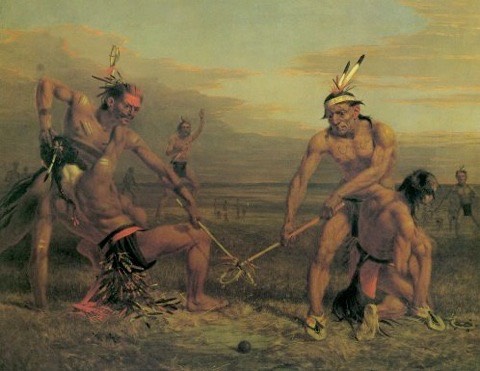
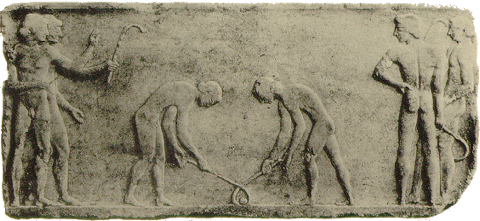

People have always played games.

Play still occupies a large role in modern behavior.
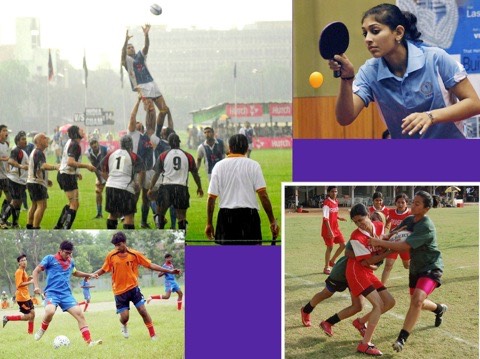
The Roots of Play
Just how far into the past must we go to find the roots of play? The answer will surprise you, because the starting point for our discussion is the development of vertebrate fish nearly 500 million years ago. Fish swim; they do so by curving their spines alternately left and right, like this:
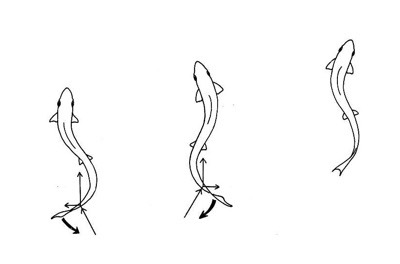
When the first fish/amphibians crawled up onto the land, they used the same basic technique to crawl: they curved their spines to the left, placed their right front foot down, then curved their spines to the right, placing their left front foot forward, like so:
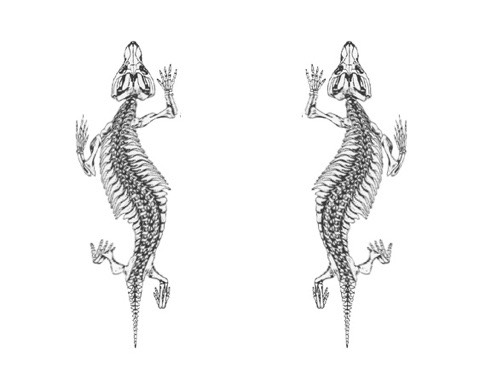
However, crawling is slow and inefficient, because you waste lots of energy dragging your tummy along the ground. The next step was to move the legs from the side to underneath the body; land animals graduated from crawling to walking.


The First Major Milestone
But an animal with four feet can do more than simply walk; it can change the order and speed with which it moves its legs. These different schemes for moving one’s legs around are called gaits, and there are lots of possible combinations of motion of those legs, so there are lots of different gaits. However, there are only a few basic types of gait, as shown with horses:
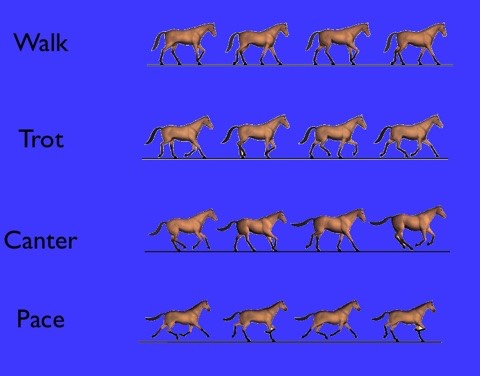
There’s a big problem with equipping an animal with multiple gaits: how can all the neurons required to control the muscles be wired up? That wiring will have to be very complicated. It’s easy enough to come up with the connections for crawling. Those connections can be programmed right into the DNA so that the creature can crawl immediately after birth:

But equipping an animal with, say, four different gaits poses a much more complex problem. Each neuron has to be wired up so that, depending upon the gait that the creature has chosen, it fires at different times relative to the other neurons. This requires the addition of extra timing neurons to advance or delay the firing of different neurons depending upon the gait. This can be very complicated. To handle this, a feature called spinal pattern generators has evolved in the spine of all vertebrates (and some invertebrates) that generates the precisely timed signals necessary to control the muscles. It goes without saying that the spinal pattern generators for animals with multiple gaits have more neurons than animals with only a single gait.
It gets worse: walking is the slowest of the gaits. Other gaits, such as running, are faster and so require more precise timing of the neurons. For example, watch this video of a cheetah running (the relevant part is from 0:57 to 1:23).
The cheetah’s front feet hit the ground just 10 milliseconds apart. I think it’s obvious that, if the cheetah’s muscle timing was off by as little as one millisecond, those feet would be misplaced and the cheetah would stumble. In other words, the cheetah’s overall timing of nerve cells must be accurate to within one millisecond. This presents us with a new problem: the average neuron has a firing precision of only about 11 milliseconds. The cheetah needs 1 millisecond precision yet its neurons are only good to 11 milliseconds. There is a way around that problem: bunch together lots of neurons and average their signals together; the more neurons you add, the more precise will be their average firing time. To understand why that is, imagine a little experiment: you want to time with great precision the exact moment when a runner crosses the finish line, and you don’t have any electronic equipment, just a lot of stopwatches. You could have one observer who measures with the stopwatch the instant that he sees the runner crossing the finish line, but that observer might be early or late. Suppose instead that you had a hundred observers all crowded together at the finish line, and each of them pressed their stopwatch button the instant they saw the runner cross the finish line. Some of the observers would be a shade early and some would be a shade late, but if you take the average of all their timings, you’d get something that is more accurate than what you’d get out of a single observer. Substitute neurons being fired for people pressing stopwatch buttons and you get the idea.
So not only must we come up with a way to trigger muscles in different timings and ordering depending upon the gait, but we also need a vast number of neurons doing all this to get the timing precise enough for fast running. In other words, we’re going to require a vast and complicated wiring diagram for the nervous system of any animal that wants to use multiple gaits. The obvious way to give that wiring diagram to the animal is to encode it in the animal’s genes. That solution runs into a brick wall: the amount of DNA required to encode all that information is prohibitively high. You’d need lots of extra chromosomes to handle that kind of system. Worse, it would take a long time for natural selection to get all the wiring genes tuned up properly.
But then, sometime around 150 million years ago (in my opinion), something remarkable happened. A new system, based on three components, appeared. I don’t know how it evolved, or what its antecedents were, but I believe that the three key components came together about 150 million years ago.
The first component was the development of a new and improved neuron. This neuron could transmit signals and respond to large numbers of inputs, just like its ancestor neurons. But this new neuron had one extra capability: it could alter its response to inputs based on what happened to it. It could change the weights that it assigned to different inputs, putting more emphasis on some inputs and ignoring others. In other words, it could change its wiring after the creature was born.
The second component was the development of a new behavior based on random trial and error. Animals would wiggle their limbs around in all sorts of crazy ways. This new behavior enabled animals to try out all sorts of activities, most of which were spastic, but a few of which might prove useful.
The third component was a new system for wiring together neurons into a nervous system. Instead of having every connection planned in advance, the DNA simply programmed neurons to connect to just about everything they could reach. In other words, animals were born (or hatched) with an overconnected nervous system.
We have names for the first two components: learning and play. By playing at moving around, animals were able to teach themselves how to run, walk, gallop, trot, and so on. Learning and play were invented simultaneously, as two parts of the same development. It’s ironic, isn’t it, that nowadays we wonder whether play can be used to improve learning when in fact, play and learning are really two sides of the same evolutionary coin.
Aside: this view of learning and play isn’t really that unorthodox: it’s just a neurological analog of what genes do in natural selection. Accidental mutations generate variations in the genes, and those variations are tested against the demands of the environment, rejecting the mutations that don’t help, and preferring the mutations that do help. In the neurological analog of this process, play generates the variations in locomotor behavior, which are then tested, not against the environment per se, but against the animal’s expectations of efficient and speedy movement. Play is the random generator used to refine the connections in the nervous system. The two primary differences between the two systems are 1) that the genetic evolutionary process requires many generations to function, while the neuronal evolutionary process -- again, what we call learning -- takes place over a time scale of days to months; and 2) that the evaluation of effectiveness is external (the environment) in the case of genes, but internal in the case of neurons -- there’s an internal evaluation process that decides whether the creature is moving well.
This was the first major phylogenetic milestone in human play.
Milestone 2: Hunting Play
The second major milestone involved hunting. Reptiles use ambush hunting, which requires just three steps: 1) wait for prey to come too close; 2) pounce; 3) grapple and kill.
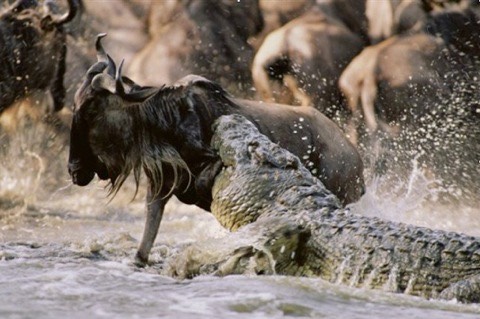
Mammals developed a more complex hunting system comprising five steps. The first is prowling (actively but secretively seeking prey):
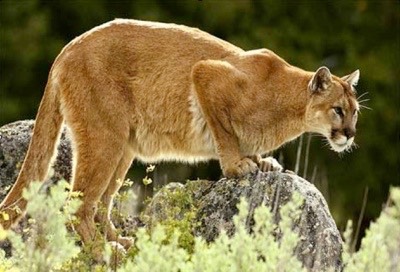
The second step is stalking: approaching the prey covertly. This requires a special skill: the ability to put yourself in the place of the prey and calculate what they would see from their position. This permits the hunter to approach more closely without being seen.
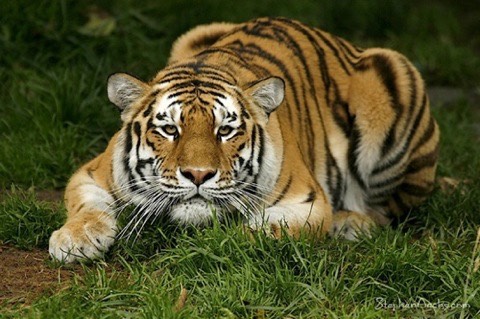
The third step is the pounce, which also requires a lot of skill to get the greatest acceleration possible to "get the jump" on the prey.

The fourth step -- assuming that the hunter doesn’t get lucky and catch the prey with the pounce -- is the chase. Mammalian chases are particularly complex, because the prey knows how to zigzag, which, if the timing is right, will throw the hunter off stride. Of course, the hunter must also anticipate the zigs and zags and compensate for them.
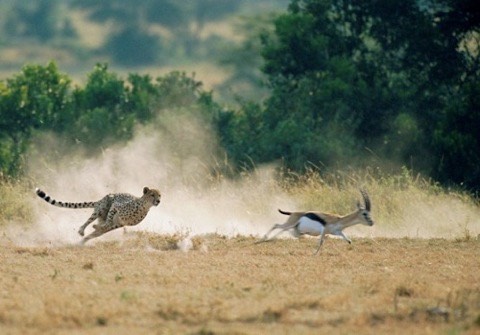
The fifth step is grappling with and killing the prey. This again requires special skills, because most prey have some sort of defensive behaviors: horns that can impale, kicks that can injure, and general thrashing about that, if lucky, can injure an eye. Remember, the eye is the most vulnerable part of the body, and it is only centimeters away from the teeth, which must be brought to bear if the hunter is to kill the prey. How do you get your teeth in for the kill without exposing your eyes to injury? Very carefully.
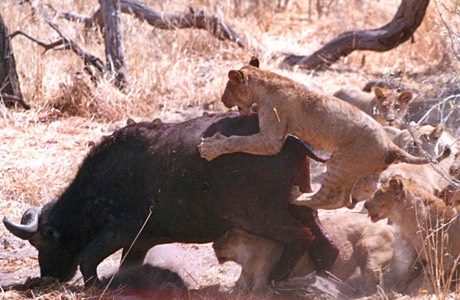
How do carnivores learn these skills? The five basic steps are instinctive, but the details of execution are learned by extensive playing. Carnivores devote most of their early lives to play; it is essential to their survival once they’re on their own. You can readily see this behavior in domestic cats:
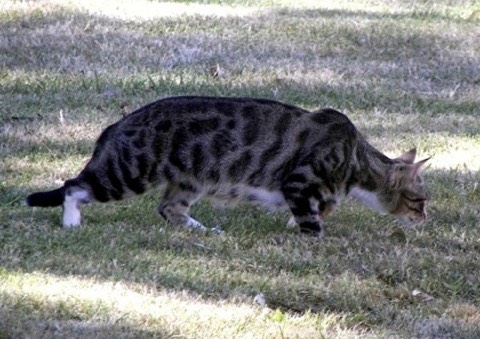
Prowling

Stalking

Pouncing
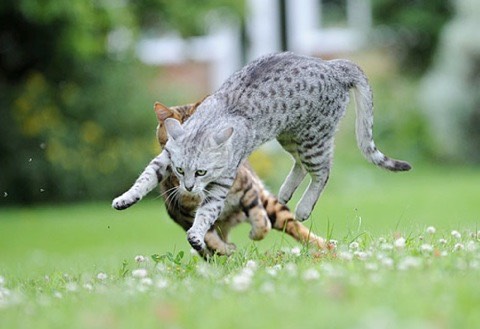
Chasing
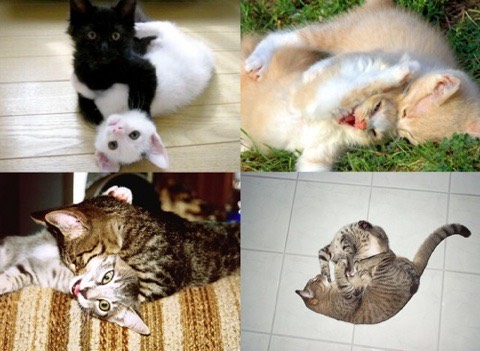
Grappling
It’s more difficult to see these play behaviors in the wild, but all mammalian carnivores do play:
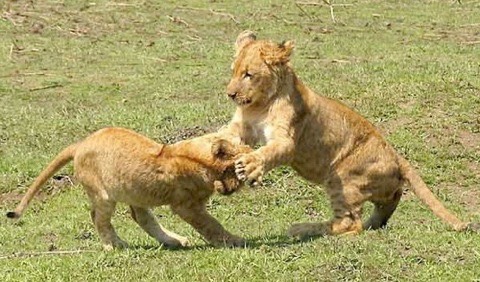
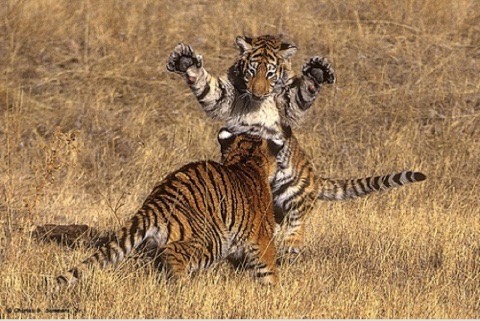
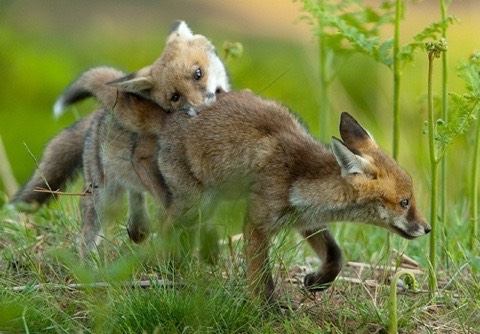

Play is also valuable to herd herbivores; they need to learn how to evade pursuit by carnivores. Therefore, they play at running, turning, and jumping; we call this play gamboling:

Thus, hunting play was the second major milestone in the phylogeny of play.
Milestone 3: Rock Throwing Play
The third major milestone came more recently: in the last 5 million years or so. For you to understand this form of play, I must first provide some background on human evolution.
The hominid line separated from the chimpanzee line about 6 million years ago, when the hominids began developing the hunter-gatherer lifestyle. The basic system worked as follows: people were grouped into small roving bands numbering perhaps a few dozen individuals. When a band moved into a new location, they’d set up a camp. The old people and the young kids remained at camp, with the old people taking care of the kids and performing domestic duties. The healthy females would spread out locally, scouring the neighborhood for roots, nuts, berries, fruits -- anything edible. They would never stray far from the camp. The males would set out on much longer hunting forays, searching for meat. Initially they operated primarily as scavengers, grabbing up whatever was left by the primary carnivores. However, competition for carrion was intense, and the males had to fight off hyenas and other scavengers. Somewhere along the way they started throwing rocks at their competitors, and that worked well.
It wasn’t long before some genius realized that if rocks could chase off hyenas, they could also kill game. Rocks weren’t very effective at the task, but these hominids developed a system that made up for that. It worked as follows:
1. Prowling: the hunter travels over large areas, seeking easy prey.
2. Stalking: once a likely victim is discovered, the hunter sneaks up as close as possible.
3. Pounce-throw: the hunter leaps up and hurls a rock as powerfully and accurately as possible. The rock hits the animal and inflicts some minor injury, seldom great enough to kill, but usually good enough to slow the animal down.
4. Tracking: the hominid hunter could never run as fast as his prey, but with stamina and special adaptations to keep body temperatures low, he could maintain a long, slow chase. He tracks the injured prey and approaches it again. Then he repeats steps 2 through 4 until the prey is so injured or exhausted that he are able to get his hands on it.
5. Grapple and kill: this was the easiest part of the hunt; an injured animal is readily dispatched.
Note that these people did not use bows and arrows or even spears; such devices were not invented until much more recently. It was all done with rocks. Thus, the hunter needed to be able to throw rocks powerfully and accurately in order to be successful in the hunt.
I’m sure you’ve heard the many tales about how physically wimpy humans are. We have tiny teeth; no claws; we can’t run fast; our eyesight sucks; we couldn’t smell a dead fish twenty yards away; our hearing is weak; we have no armor; and so on. Only our intelligence gave us the advantage to conquer nature. So goes the story.
That’s not quite true, because there is one physical skill in which we humans excel: rock throwing. We can outthrow any creature on the planet, and not just by a little -- our closest competitor, the chimpanzee, couldn’t hit the broad side of a barn with his own feces. This rock-throwing ability of ours is based on two special factors. The first is musculature. Our musculature is optimized for rock-throwing. Here, look at some images of what we consider to be "super-men":
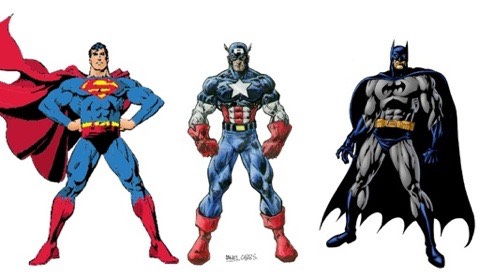
Note the musculature on these guys: big pectoral muscles and big biceps. Those are the primary muscles involved in rock-throwing, and big muscles give you the strength to throw rocks really powerfully. Those muscles thus confer the ability to catch lots of meat. The value of meat was more than just a tasty meal and nutrition: meat is what the hominid chicks really dug, because the protein in meat is essential for growing infants. Mr. Big Pectorals who has lots of meat to hand out has lots of chicks hanging around him, and in a few years there will be lots of little Mr. Big Pectorals running around camp. That’s why big pectorals and biceps are considered to be indicative of great manliness.
But there’s another factor required to throw rocks powerfully and accurately: skill. Any guy can tell you that it’s hard to throw a baseball straight and fast at the strike zone. So how do guys develop that skill? The answer should be obvious: by playing. Throwing rocks is a male obsession from early years:

Men never outgrow the love of throwing rocks; they just graduate to different kinds of projectiles:
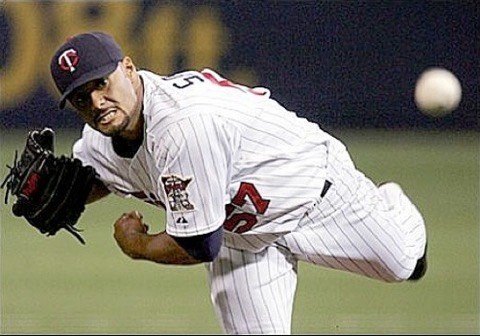
Baseballs!

Basketballs!
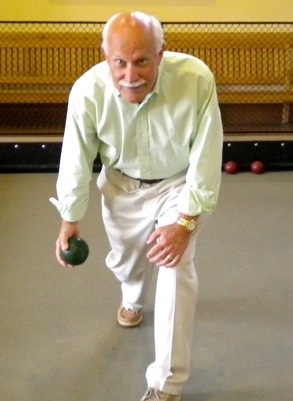
Bocce balls!
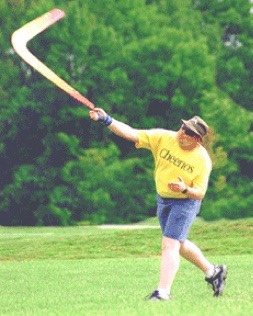
Boomerangs!
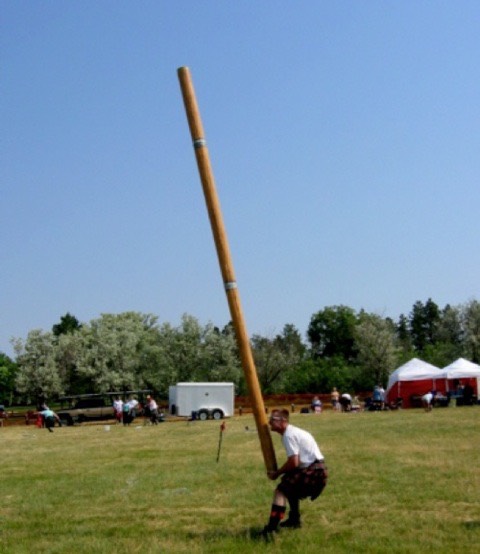
Cabers! (otherwise known as logs)
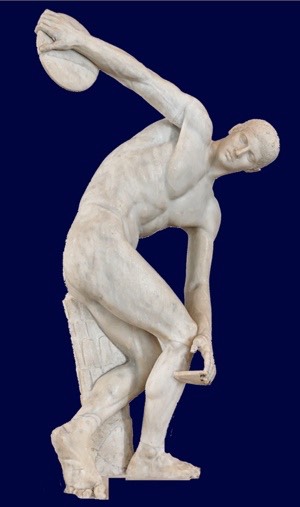
the discus!
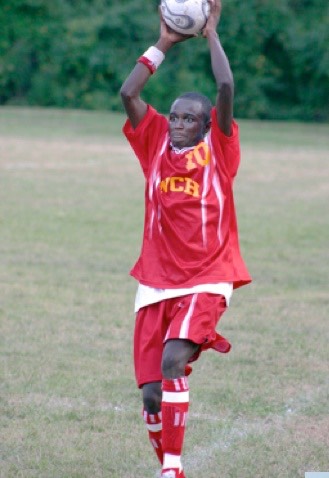
Footballs!

Footballs, American style
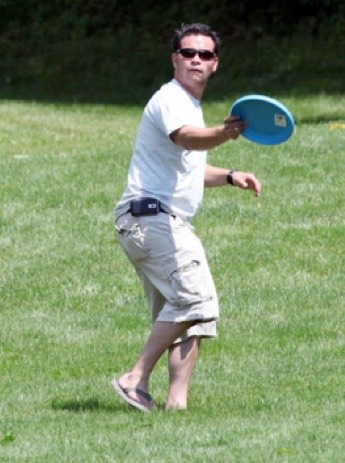
Frisbees!
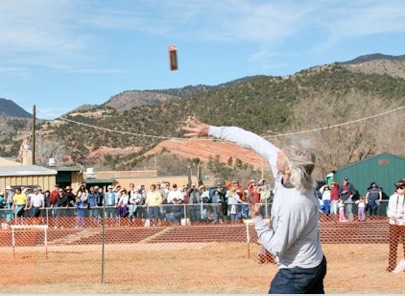
Fruitcakes!
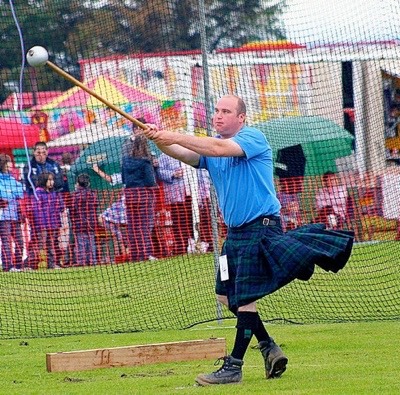
Hammers!
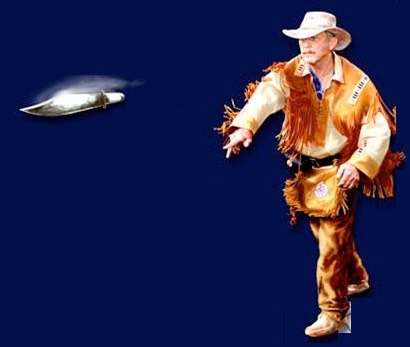
Knives!

Shotput balls!

Snowballs!
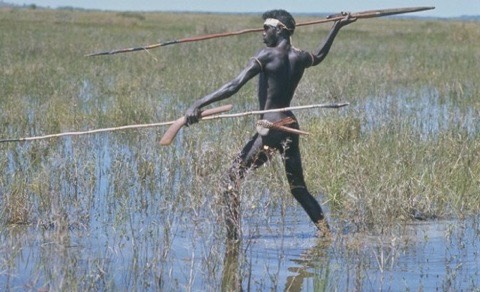
Spears!
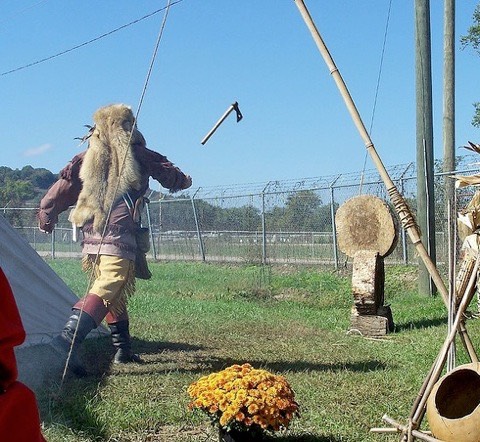
Tomahawks!
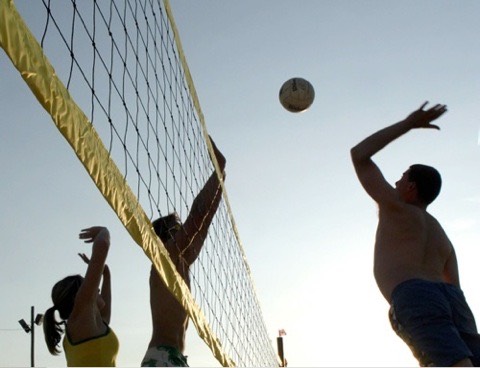
Volleyballs!
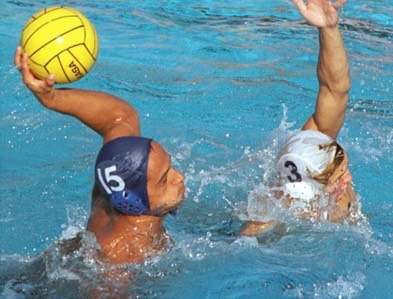
Water polo balls!
Men really like to throw things! Love of throwing things is deeply ingrained into the male psyche, and so men play at it enthusiastically. Note also that they never outgrow the fun of throwing things -- they keep doing it all through their lives.
This form of play is the third major milestone in the phylogeny of human play.
Milestone 4: Manipulative Play
The fourth major milestone in the phylogeny of play is quite recent -- it first appeared perhaps a few million years ago but did not really develop until perhaps the last 50,000 years. It is the most important of the four major milestones as well as the most difficult to understand.
The earliest stone tools make their appearance in the record almost 3 million years ago. What’s particularly striking about these tools is that they’re all alike. There is only one basic design -- the handaxe -- that doesn’t change for ages. Sometime around a million years ago, we start seeing different types of stone tools emerging, but even then there’s still great uniformity of design in any one period and area. It appears that each culture had its own standard toolkit of stone tools and nobody deviated from that standard toolkit. This is surprising because we would expect people to mess around with their tools, trying different variations. But apparently people didn’t play much with stones while making tools.
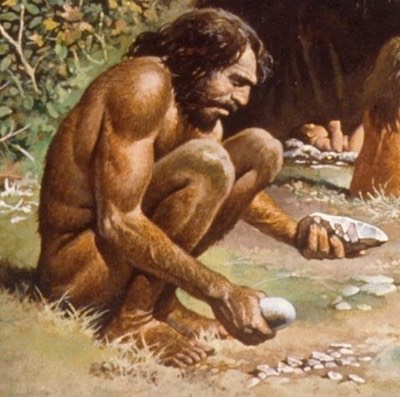
This dearth of creativity slowly ebbed during the last million years; we start to see greater innovation and variety in the toolkits of hominids. People were starting to manipulate stones while thinking about their shapes and how those shapes might change under different kinds of blows. People were starting to play with their toolmaking.
This was a huge leap, because it required a major break with the past. All the previous forms of play had been fundamentally motor in the nature. The first form of play, running and jumping to learn different gaits, was confined to whole-body motions and required no real interaction with the environment. The second form of play, mammalian hunting, was also concerned primarily with locomotion, although some interaction with the prey was brought into the mix, introducing a small cognitive element to the play. The third form of play, rock-throwing play, was also fundamentally motor in nature, but it was wrapped up in a complex set of behaviors that required greater cognitive effort. But this fourth kind of play, which I call "manipulative play" because it involved use of the hands, was fundamentally cognitive in nature. Yes, it relied upon the hands to manipulate objects being played with, but there was a lot more cognitive activity going on with this kind of play. People were starting to think more about what they were doing, and think in a playful manner.
Sometime around 50,000 years ago, there was a remarkable change in human behavior. The archaeological record suddenly bursts with images painted on cave walls, clay figurines, abstract markings in bones and rocks, and all manner of other innovations. It’s as if humanity suddenly woke up to its creative potential. There have been many hypotheses offered to explain this sudden leap in cognitive capabilities; I personally like the hypothesis that the benefits of langauge finally kicked in at this point. But I also believe that play had a hand in it as well. In particular, I believe that a contributing factor was the recognition that just fooling around with things could be useful. People were taking objects into their hands and messing around with those objects in new and playful ways. Once that playful behavior pattern sank in, humanity was well on its way to videogames.
Ontogeny and Phylogeny of Play
Consider this graph presenting an abstract history of the phylogeny of human play:
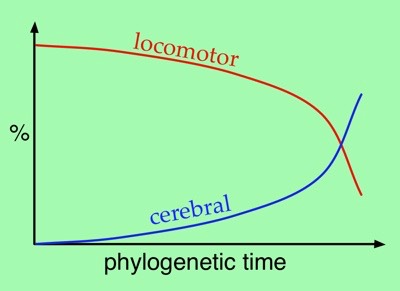
While this is far too simplistic a representation, the point of the graph is that, at first, play was exclusively motor in nature, and over the course of time, the cognitive element grew in importance and the motor element diminished. But most of the transition took place very recently, and the motor element has not disappeared.
Now it’s time to start a new line of thought; we’ll join this line with the previous line a little later. Meet Ernst Haekel:

Haekel was a biologist in the late 19th century. He proposed on the most fascinating ideas to grace intellectual history: Haekel’s Law, stated as "Ontogeny recapitulates phylogeny." To understand the law, you only need to understand two ideas: ontogeny and phylogeny.
Ontogeny is the process of development of a new creature inside an egg or a womb. It is the sequence of developmental stages that the creature undergoes between conception and maturity. Phylogeny is the evolutionary path taken by any species. While the overall picture of evolution of life on earth is a bush with ever-spreading branches, the path leading to any single species is linear, and we call that path the species’ phylogeny.
Haekel’s Law therefore asserts that the process of development of a newly-conceived creature recapitulates the evolutionary sequence that led to that species. I love this law because it expresses such a huge idea in just three words. There’s only one small problem with Haekel’s Law: it’s wrong. Not absolutely, totally wrong, just wrong in far too many ways. It’s true that there is a rough correspondence between some stages of ontologenic development and some evolutionary stages of that species’ phylogeny. For example, every creature starts off as a fertilized egg: a single-celled creature, just as life began with single-celled creatures. During one stage of human ontogeny, the fetus develops gill slits like those in fishes. Also, the human fetus has a tail for a goodly period during its development. So, yes, there are some interesting correspondences, just enough to make Haekel’s Law an interesting aside in biology. But there are massive discrepancies as well.
I’d like to apply Haekel’s Law, in a very loosey-goosey fashion, to human play. I claim that the ontogeny of human play faintly echoes the phylogeny of human play. While my claim has some obvious problems, there is an undeniable kernel of truth in it. Consider: the human infant’s first learning task is crawling -- just like tiktaalik all those millions of years ago crawling out of the sea onto land. Then the infant learns how to walk, and quickly sets to work playing at other gaits: running, jumping, and so forth.
What about the second milestone in human phylogeny: hunting play? It’s not strong in human behavior (because we diverged from carnivores a long time ago), but we definitely see some faint remnants of hunting play. For example, kids play hide-and-seek games with friends and parents. Kids also play plenty of chase games as well as grappling games. I suspect that these forms of play are the last vestiges of our hunting play behaviors.
The third milestone -- rock throwing -- definitely shows up early in human development, as I mentioned earlier. Because it is a more recent evolutionary development, males never outgrow the impulse to play at throwing things. Thus, this third stage shows up later than the previous two stages.
Lastly comes the fourth milestone: manipulative play. This form of play first appears fairly early in child development, but it doesn’t really kick in with full force until rather later.
So the ontogeny of human play doesn’t follow the phylogeny of play in lockstep; there’s a lot smearing together of the different stages, but there is a general tendency for phylogenetically later play behaviors to come into force ontologenetically later.
Significance of the Ontogeny of Play
Now let’s bring our chickens home to roost. Let’s return to the notion of the difference between the motor content of play and the cognitive component of play. We apply our ghost of Haekel’s Law to the notion to produce this graph:
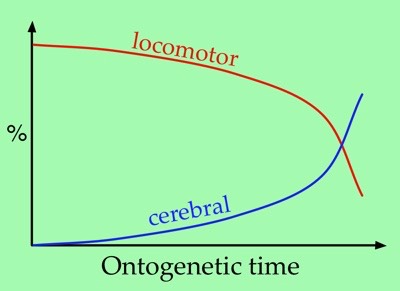
In words, human play is initially exclusively motor, but as a human child grows, the motor component diminishes and the cognitive component increases.
Remember how I mentioned that learning and play are two sides of the same phenomenon? That means that learning and play are intimately associated. This in turn tells us something extremely important about early education: our efforts at early education must rely heavily on motor elements. Relying exclusively on cognitive elements in teaching young children is a denial of their evolutionary history. Granted, we must acknowledge that the skills that we wish to teach them are fundamentally cognitive in nature. But that cognitive element must be piggybacked on top of a locomotor element. We must use the locomotor element as the vehicle to carry the cognitive load of our teaching. This is exactly the wrong way to teach children:

This is all wrong because it forces the children into a mode that’s all cognitive and has no motor activity. Kids aren’t ready for that yet. Here’s an even worse approach:

Again, the blunder here lies in talking and showing students mathematics. They should be doing the mathematics in a manner that lets them feel the processes in their musculature. They should be carrying bags with different numbers of marbles in them, walking different numbers of steps, lifting heavier and lighter things to truly experience mathematical concepts at the motor level.
Why have we been so blind to this truth? Why haven’t we implemented these ideas already? Blame this guy:

Rene Descartes is famous for articulating and discussing what is known as "the mind-body problem": the notion that the mind and the body are separate and somewhat antagonistic components of the whole human. Actually, I’m using Descartes as a scapegoat; the idea has shown up in every civilization. It springs from the conflict between law and behavior. Consider: in every society we have laws against stealing, killing, and so forth. Yet throughout history people have continued to steal, kill, and commit other crimes -- even though the punishments for those crimes far exceeded the benefits of committing them. In every society in all of history, you’d have to be crazy to commit a crime. Except that people have committed lots of crimes in every society in all of history. How can so many people be so crazy? Inasmuch as every society desires to minimize crime, a great deal of thought has gone into this problem, and most societies have come up with an answer that runs roughly along these lines:
“Every person knows in his mind that crime is not just evil, but self-destructive. But every person also has a body that has needs and drives that are difficult to control. Thus, each of us constantly fights a war between our mind and our body. The mind understands the true situation, but the body’s urges ignore the possibilty of punishment. We are therefore taught that the mind must prevail in this war, lest the body lead us to commit self-destructive crime. The mind must conquer the body!”
This notion is so deeply burned into our brains that we start to view our bodies as necessarily inferior to our minds, dangerous barbarians that must be kept under close control. We instead glorify the mind at the expense of the body. All of this certainly makes sense if we are to socialize and civilize the new members of our society. But in the case where this thinking pervades our educational strategies, it wreaks havoc. We employ stupid strategies that are ill-suited to the nature of the students we seek to teach. Therefore, we must always bear in mind this special exception to our perception of the mind-body problem.
Most people have such deep-seated resistance to this idea that I’d like to take a little space driving home the point. Somatic considerations dominate our thinking -- even our adult thinking -- in ways that most people don’t notice. For example, look how we use parts of our body to express complex ideas:
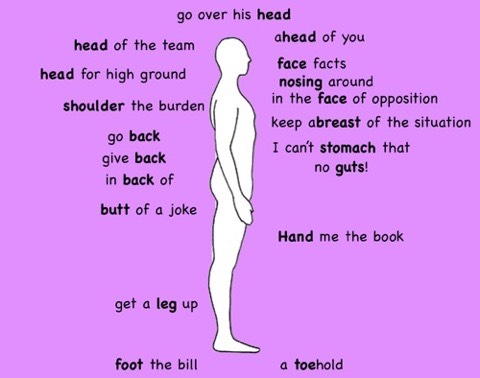
Or consider how the original word for foot in the Indo-European languages ("*ped") has spread all through the nooks and crannies of our language, showing up where you least expect it:
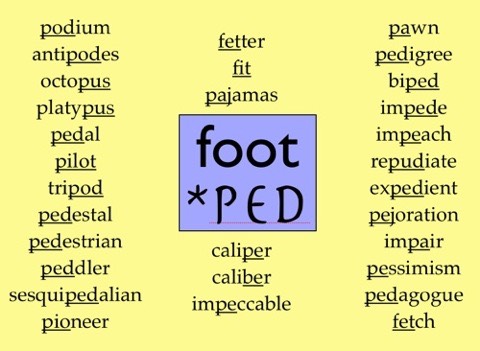
To conclude at last: we have given short shrift to the role that the body plays in our cognition. The fundamental mode of learning for all animals has been play, and play has -- until the last 50,000 years -- been almost exclusively locomotor in nature. The mind learns through the body by playing, and we need to embrace this truth if we are to improve our educational system.
